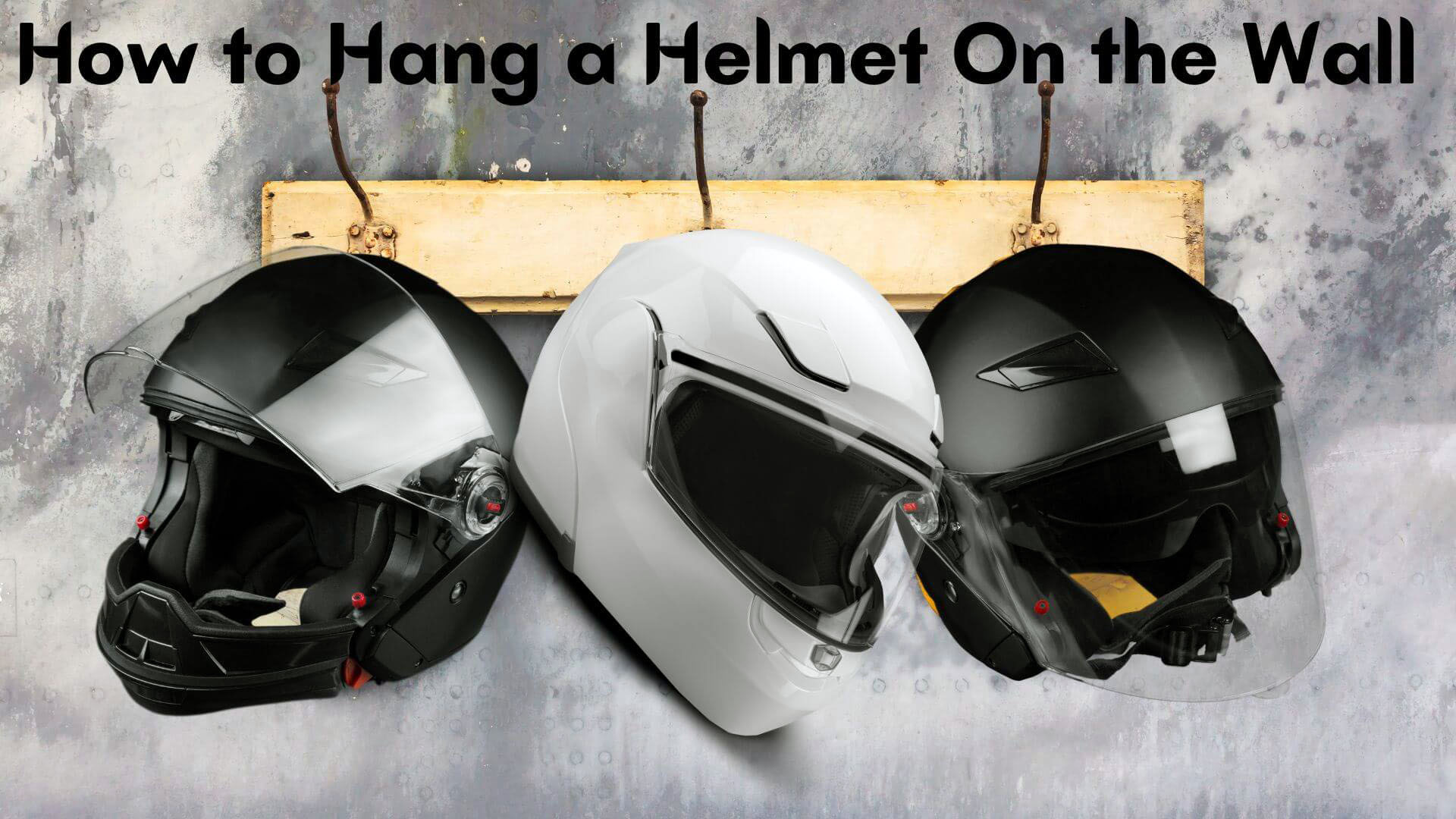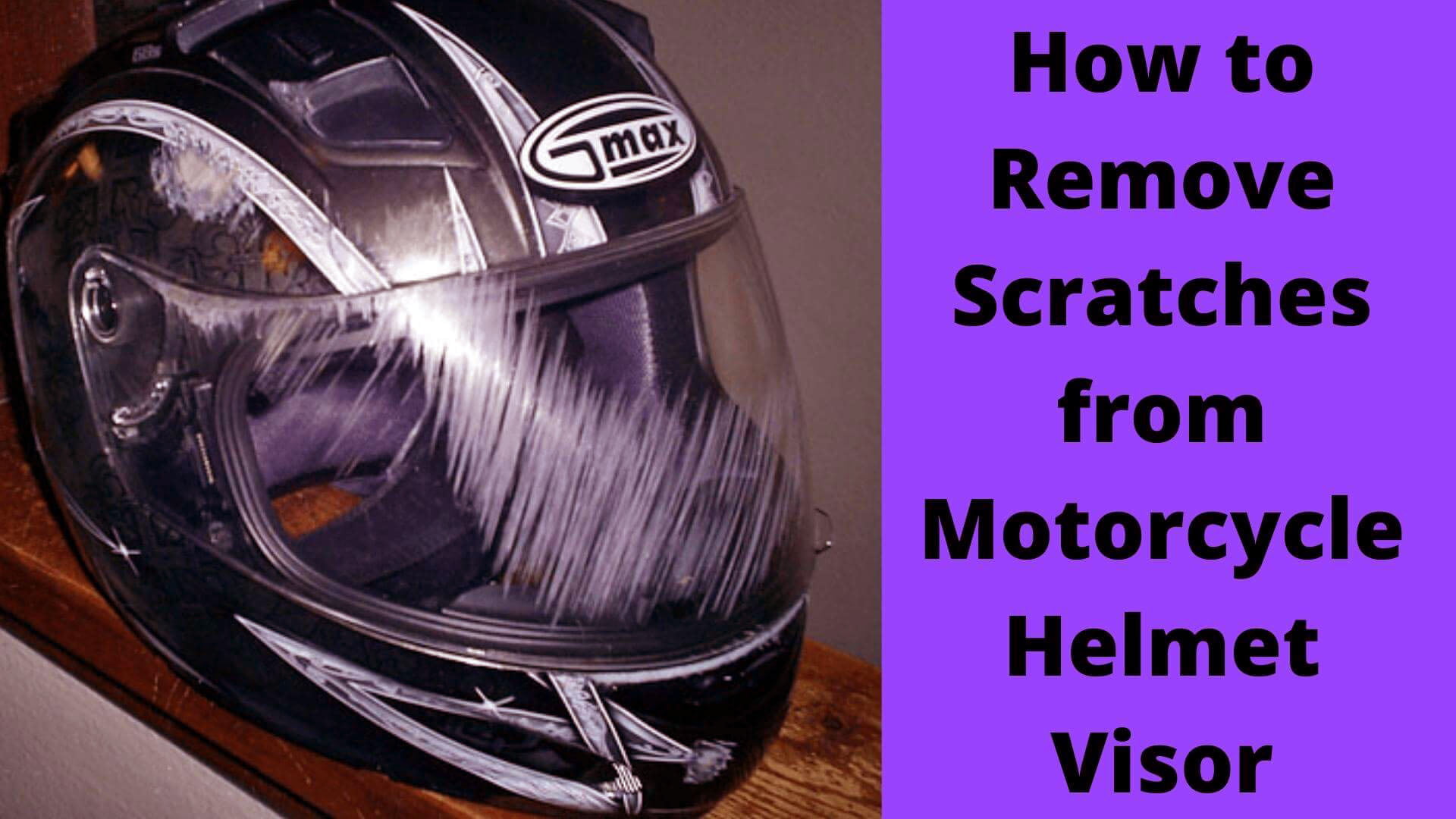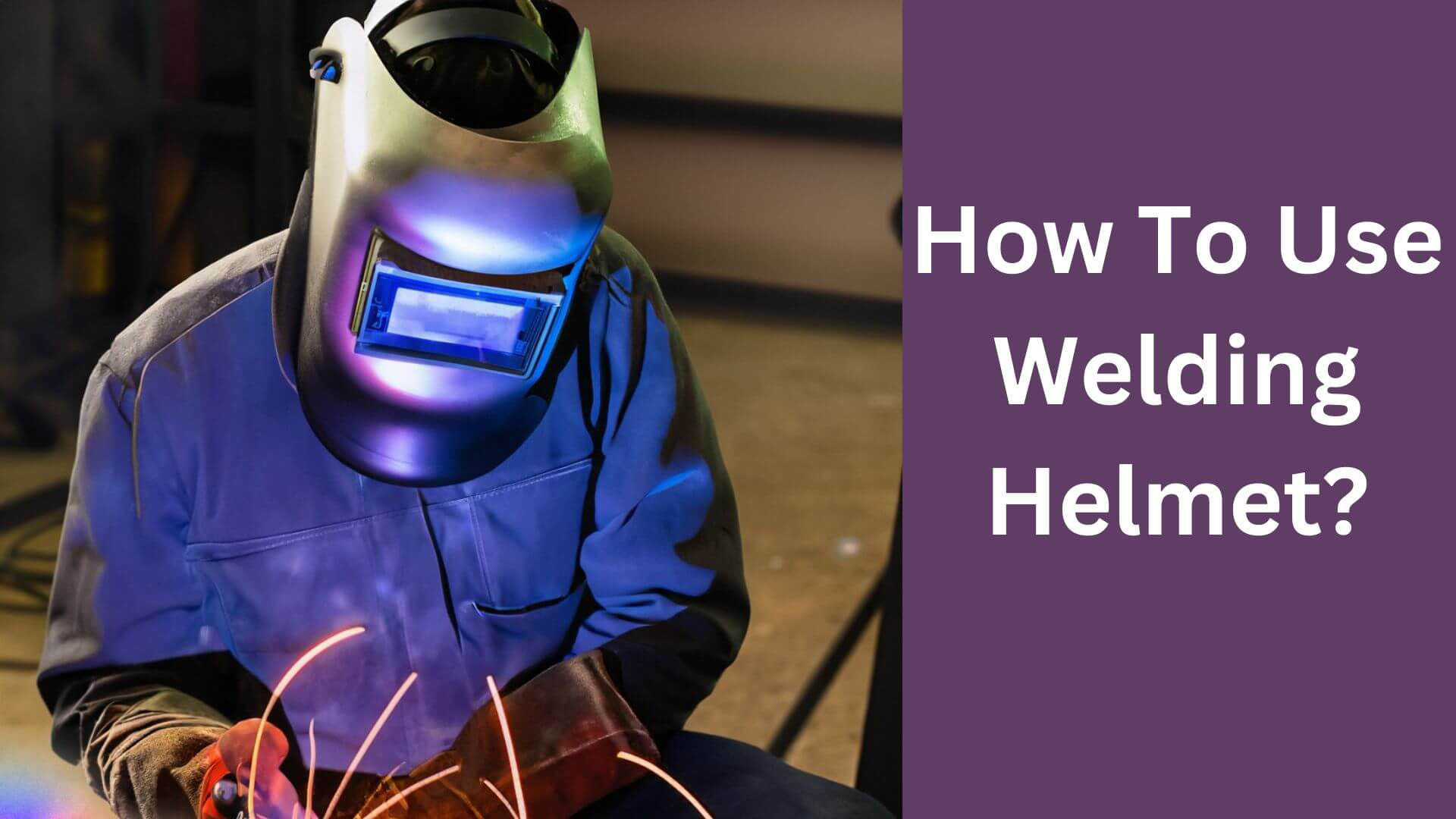How Do You Check the Rating on Welding Helmets? Decoding Welding Helmet Ratings
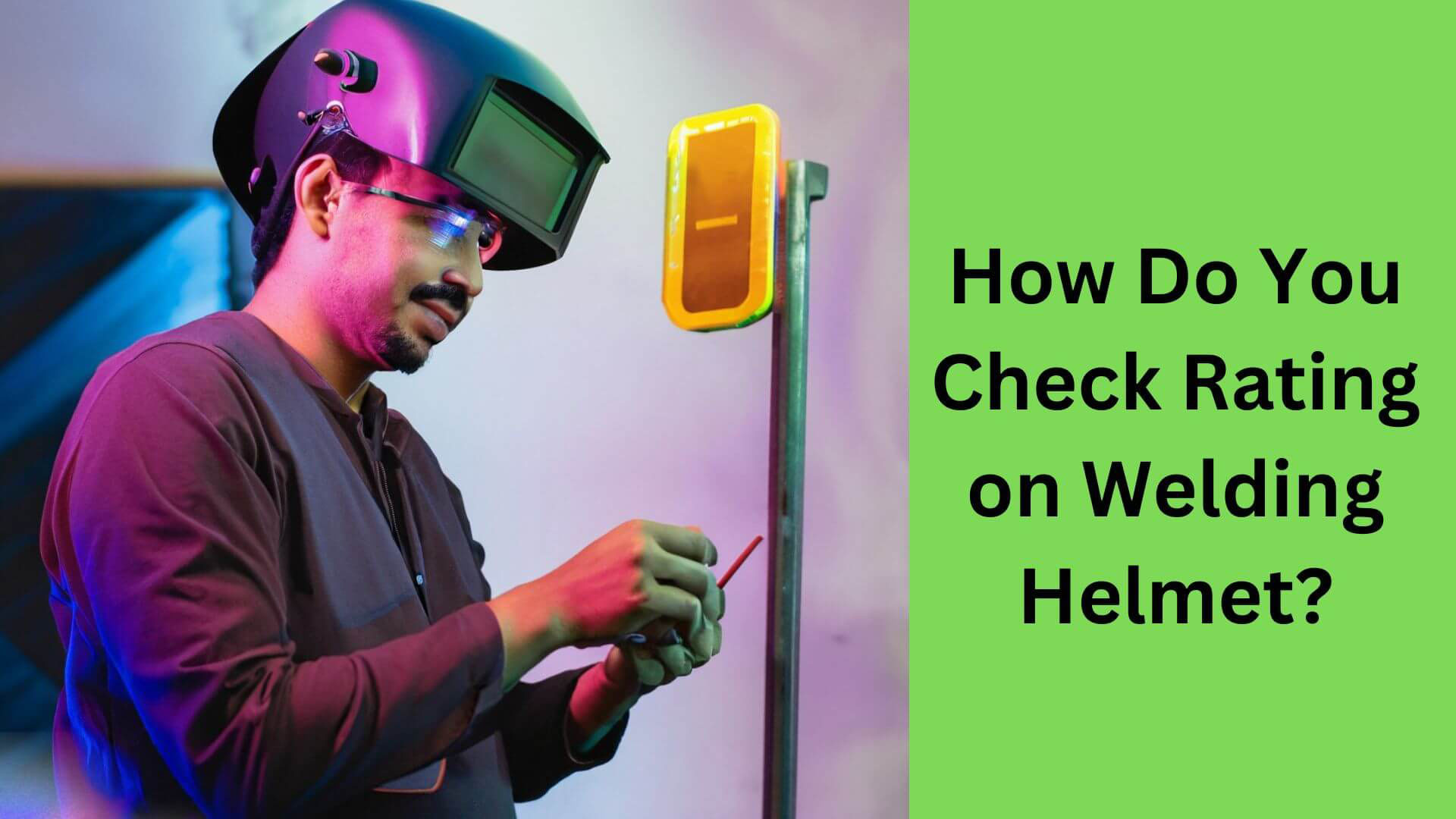
Look for the shade number to check the rating on a welding helmet. The shade number indicates the level of protection the helmet provides from the bright light and heat generated during welding.
A higher shade number indicates a greater level of protection. The recommended shade number varies depending on the type of welding being performed.
Welding helmets are essential safety gear for welders as they protect them from harmful sparks and radiation.
Wearing a welding helmet with the correct shade number is crucial to safeguarding eyesight. The shade number is correlated with the lens’s level of protection against light and radiation.
Welding helmet models typically come with shade numbers that range from 8 to 13. The higher the shade number, the more protection the helmet provides.
In this article, we’ll take a look at how to check the rating on your welding helmet so you can ensure that you’re using the appropriate protection for your eyes.
Understanding Welding Helmet Rating
Welding helmets have different ratings that indicate their level of protection against radiation. Understanding welding helmet ratings helps you choose the perfect helmet for your needs.
Three essential factors to consider when selecting welding helmets: comfort, clarity, and safety. Here’s what you need to know about welding helmet ratings.
What Is A Welding Helmet Rating?
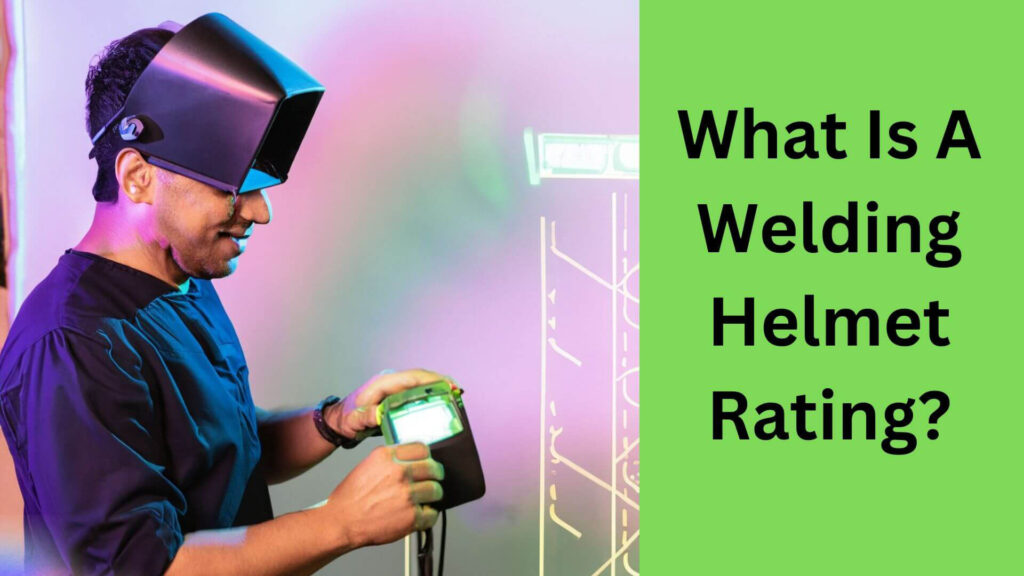
A welding helmet rating measures how efficiently a helmet blocks ultraviolet and infrared radiation from the arc. The rating is usually expressed as a shade number and is determined by the type of welding you are performing, the arc welding process, and the welding parameters.
The higher the rating number, the darker the lens and the more light it blocks. Shade numbers can range from 1 to 14, with one being the lightest and 14 being the darkest.
Ansi And Aws Standards For Welding Helmet Rating
The American National Standards Institute (ansi) and the American Welding Society (aws) developed standards for welding helmets in the United States. These standards establish minimum requirements for the construction, performance, and testing of welding helmets. The ansi z87. 1 standard deals with face and eye protection devices, while aws z87.
1 is the standard for welding helmets. Helmets that meet these standards have been tested for optical quality, impact resistance, and ignition resistance.
Different Types Of Welding Helmets And Their Rating System
Welding helmets come in different types, including passive, auto-darkening, and flip-up welding helmets. Each type has its rating system.
For passive welding helmets:
- The shade number is usually fixed and cannot be adjusted,
- The helmet lens has a green tint,
- A battery does not power the lens.
For auto-darkening welding helmets:
- The shade number is adjustable, giving you flexibility in choosing a lens shade for your welding task,
- The lens automatically darkens in response to the welding arc, preventing eye fatigue caused by repeated manual adjustment of the helmet,
- A battery powers the lens.
For flip-up welding helmets:
- These are a combination of passive and auto-darkening helmets,
- The helmet allows you to move the front shield away from your face, revealing a passive lens beneath, for tasks that do not require dark lenses.
Understanding welding helmet ratings is crucial to protect yourself from the harmful radiation released in welding.
Choose the fitting welding helmet for your task, appropriate for your welding process and environment.
How To Check The Welding Helmet Rating
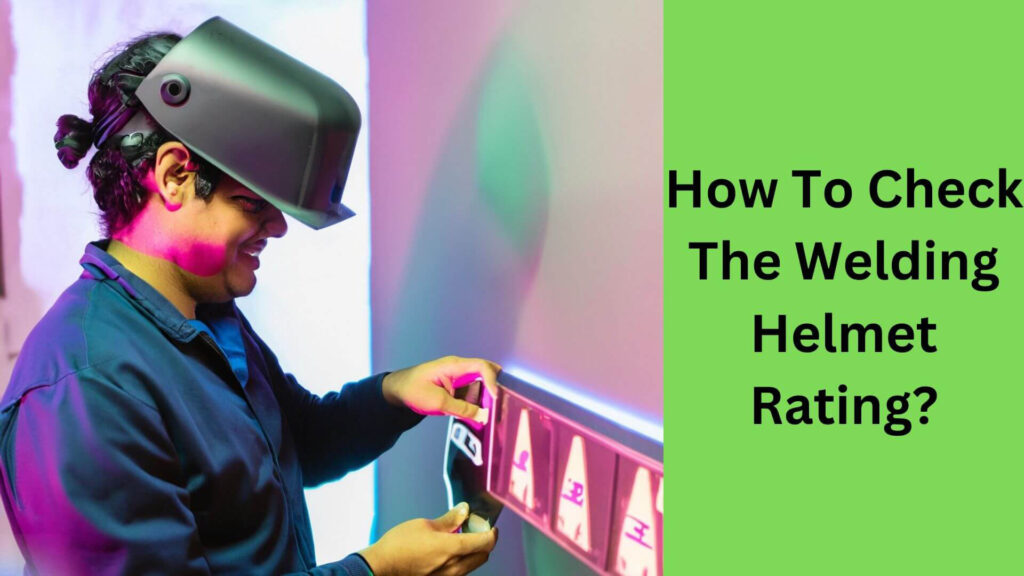
A welding helmet is a necessary safety accessory that protects welders from harmful UV radiation, flying debris, and other risks involved in the welding process.
However, not all welding helmets are created equal, and choosing one with a high-quality rating that meets relevant standards is crucial.
Here I will explore how to check the welding helmet rating, covering the physical checking of the welding helmet rating, verifying the ansi and AWS standards compliance, and using the online tool to verify the welding helmet rating.
1. Physical Checking Of The Welding Helmet Rating
Physical checking is the most straightforward way to check the welding helmet rating. You can look for the information, printed or engraved, inside the helmet’s shell or on the packaging box. Here are some key things to look for:
- The shade number, ranging from 8 to 13, indicates how much light the helmet filters out. The more extensive the shade number, the darker the helmet.
- Optical class measures the helmet’s optical quality, ranging from 1 to 3, with class 1 representing the highest quality.
- The sensitivity setting controls how responsive the helmet’s auto-darkening filter is to the welding arc’s brightness.
- Delay setting, which controls the time that the lens takes to switch from dark to light after completing the welding process.
2. Verifying The Ansi And Aws Standards Compliance For Welding Helmet Rating
In the United States, two organizations set the welding helmet standards: the American National Standards Institute (ansi) and the American Welding Society (AWS).
Ansi oversees safety and performance measures of personal protective equipment, including welding helmets. Aws, on the other hand, sets guidelines specific to welding helmets.
Here are the key points to consider:
- Check whether the welding helmet complies with ansi z87.1-2010, which sets standards for eye and face protection devices, including helmets.
- Ensure that the welding helmet complies with AWS z87.1-2020, which includes additional safety and performance guidelines for welding helmets.
3. Using The Online Tool To Verify The Welding Helmet Rating
You can use various online tools to verify the welding helmet rating, including the AWS website and Google. Here are some key things to consider:
- Visit the AWS website’s product search tool and enter the helmet’s manufacturer, model number, and shade number. The search results will provide information about the helmet’s compliance with AWS standards.
- Search for the welding helmet’s brand and model number on Google and read customer reviews and ratings. However, ensure that the reviews come from reliable sources, such as Amazon, Walmart, and Home Depot.
Checking the welding helmet rating is crucial for welders’ safety and performance. Following the guidelines above, you can select a welding helmet that meets the relevant safety and performance standards.
Factors Affecting The Welding Helmet Rating
Welding helmets are essential when it comes to welding, and it is crucial to have a welding helmet that is both safe and comfortable to work with. There are multiple factors to consider when checking the rating of a welding helmet.
Here are the critical factors that affect the welding helmet rating:
1. Optical Clarity
Optical clarity is an essential factor when checking the rating of a welding helmet. It is the clarity of the welding helmet’s lens and the ability to provide a clear view of the welding area.
Welding helmets with a higher optical clarity rating have a better and clearer view, which means you can weld more precisely and with greater confidence.
A low optical clarity rating can cause eyestrain and, in the long term, could damage your eyesight.
2. Auto-Darkening Technology
Auto-darkening technology is a crucial factor in welding helmets because it works to protect your eyesight. With this technology, the helmet automatically darkens when in contact with the welding arc, protecting your eyes from harmful light.
A welding helmet with a high auto-darkening rating will darken faster and remain dark for longer, providing better eye protection.
3. Viewing Area And Lens Shade
The viewing area is the lens size through which you can view the welding area. A larger viewing area allows you to see more of your workspace, but it can also add weight to the helmet, making it less comfortable to wear.
The lens shade is the level of tint on the lens, which protects your eyes against the welding arc’s brightness. A high lens shade rating provides better protection for your eyes, but it can be harder to see your workspace.
4. Reaction Time And Sensitivity
Reaction time and sensitivity are essential factors when checking the welding helmet rating. Reaction time is how fast the helmet will darken when exposed to the welding arc, while sensitivity is how much brightness is needed to activate the auto-darkening feature.
A welding helmet with a fast reaction time and high sensitivity rating will better protect your eyesight.
5. Shell And Lens Material
The materials used in constructing the shell and lens play a significant role in the welding helmet rating. The shell should be durable to handle the harsh working environment and protect the user from potential hazards.
The lens should be made of high-quality material that can withstand the intense heat and brightness of the welding arc. A welding helmet with a high-quality shell and lens material will provide better protection for the user and increase the helmet’s lifespan.
The welding helmet rating is an essential factor to consider to ensure your safety as a welder. By examining the optical clarity, auto-darkening technology, viewing area and lens shade, reaction time and sensitivity, and the shell and lens materials, you can determine the best helmet for your needs.
Remember that a high rating in these factors provides better protection and comfort, ensuring your safety during welding.
Importance Of Welding Helmet Rating
Welding helmets are essential in any welding job, and choosing the right one is vital to protecting yourself and ensuring good welding quality. You must check their ratings while shopping for welding helmets to ensure proper protection.
Here I’ll discuss the significance of welding helmet ratings concerning health and safety, eye protection, and welding quality.
1. Health And Safety
Welding produces high-intensity light and radiation, and exposure to these can cause severe damage to the eyes and skin. The welding helmet is designed to shield you from these risks and provides significant protection against light, radiation, and other hazards, making it a safety gear necessity.
The excellent welding helmet rating guarantees greater peace of mind regarding welding health and safety.
- Welding helmets with high optical clarity ratings remain clear and distortion-free for extended periods, thus making it easy for you to see everything correctly.
- The auto-darkening filter lens (adf) feature of helmets reduces the need to flip the helmet up and down, preventing neck strains and head bumps.
- The higher the ultraviolet and infrared radiation protection level, the better the helmet rating. This feature is critical as it protects you from harmful radiation.
2. Eye Protection
Welding helmets protect your eyes from the bright flame, arc rays, and other hazardous light sources produced during welding, in addition to other safety gear.
Welding tools without proper eye protection is impossible, and a suitable helmet rating offers several advantages.
- The auto-darkening filter in a welding helmet with good ratings helps to adjust the lenses’ shade to protect your eyes from the light, making it more comfortable to weld.
- The more sensitive the arc sensors, the less likely the welder will face arc flash. Additionally, the quicker the welding helmet switches to dark mode, the less likely the welder will become distracted during welding.
- Some helmets come with a grind mode, allowing the welder to switch between welding and grinding modes without removing the helmet. This feature is necessary for those who switch between two activities frequently.
3. Welding Quality
The welding helmet rating also plays a crucial factor in welding quality. The helmet’s quality can substantially impact the welder’s ability to work efficiently and effectively, but it can also affect the work quality.
- Better welding helmets with high ratings also have a larger field of view, allowing the welder a better view of the welding environment, resulting in better accuracy.
- Auto-darkening filters with a low switching delay can decrease the rework required while creating a welding masterpiece.
- The availability of a comfortable head suspension system can help improve the quality of the weld while providing comfort and ease of use.
Checking the welding helmet ratings is a crucial decision that welders should prioritize when shopping for a helmet.
The helmet must have safety, protection, and quality; a high rating guarantees all three elements. It’s up to the welder to determine the level of helmet rating best suited for their safety requirements and budget.
Frequently Asked Questions For How Do You Check Rating On Welding Helmet
How Do You Know If Your Welding Helmet Is Rated?
Check the helmet label and see if it has ansi z87. 1 or z87+ marking.
What Is The Standard Rating For Welding Helmets?
The standard rating for welding helmets is ansi z87. 1 or z87+.
Can You Use Any Welding Helmet For All Welding Processes?
Different welding processes require specific helmets with appropriate shade levels and filters.
What Is The Minimum Shade Level For Welding Helmets?
The minimum shade level for welding helmets is shade 10.
Can You Wear Glasses Under A Welding Helmet?
Yes, but it is recommended to use a helmet with prescription glasses inserted for better protection.
Last Verdict
After reading this post, you should clearly understand what to look for when checking the rating on a welding helmet. Remember, the rating system is crucial for your safety and comfort.
Ensuring that the helmet you purchase is certified and meets all required standards based on your welding needs is essential.
Proper research and knowledge will help you make an informed decision and protect you from potential hazards. So, before you make a purchase, consider the factors discussed in this post and take your time to evaluate the options available to you.
By doing so, you will invest in a welding helmet that will provide the protection and comfort you need while welding.

Hey, I’m Hrithik Hossain. I am the head of helmethacks.com, which specializes in safety helmets. I am looking to connect with anyone interested in purchasing a helmet or who has any questions about different types of helmets. I have over 8 years of experience as a helmet expert, and I can’t wait to help you find the perfect helmet for you. I can help you with any questions regarding helmets, from the best brands to fitting, style, and more! I really enjoy keeping people safe by ensuring they have the best protection possible.




